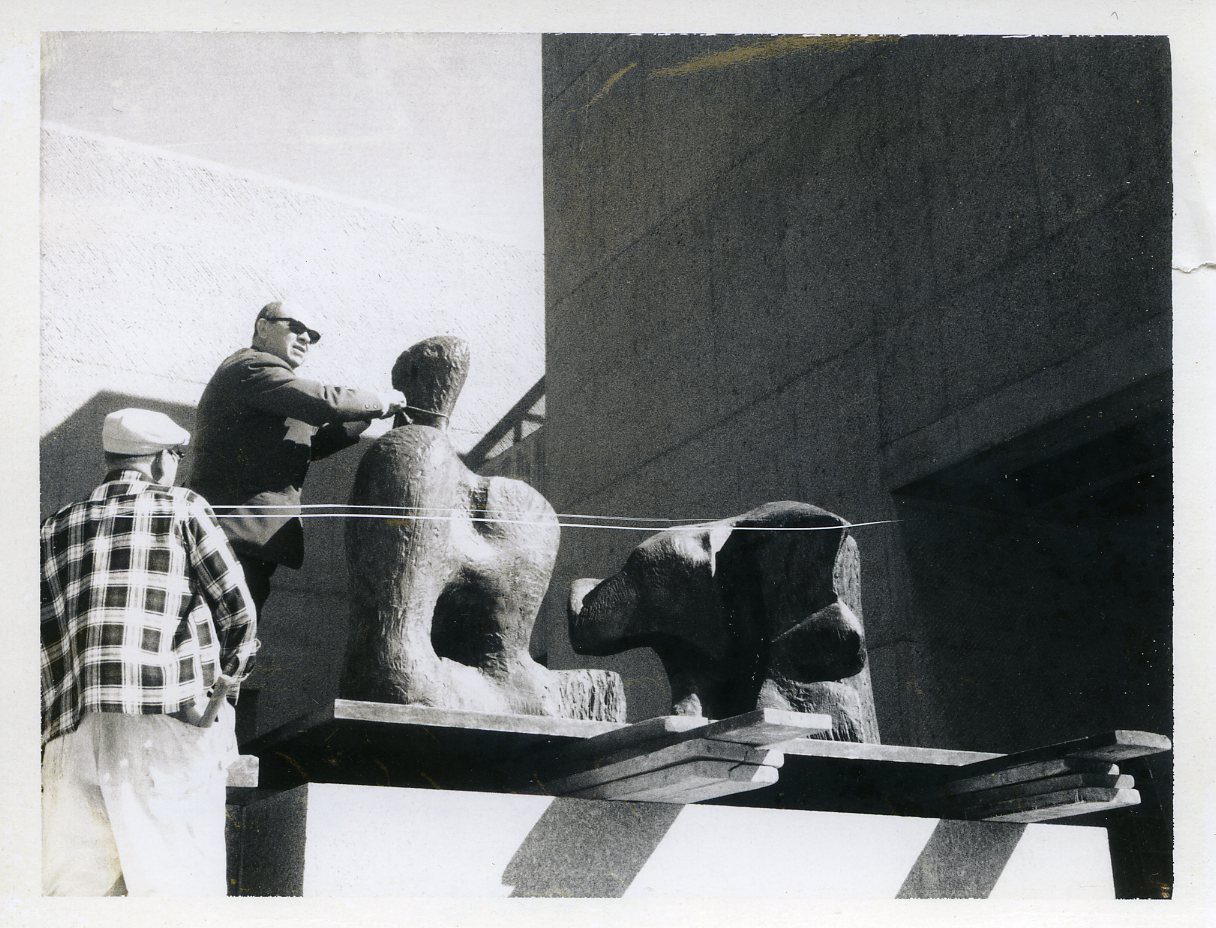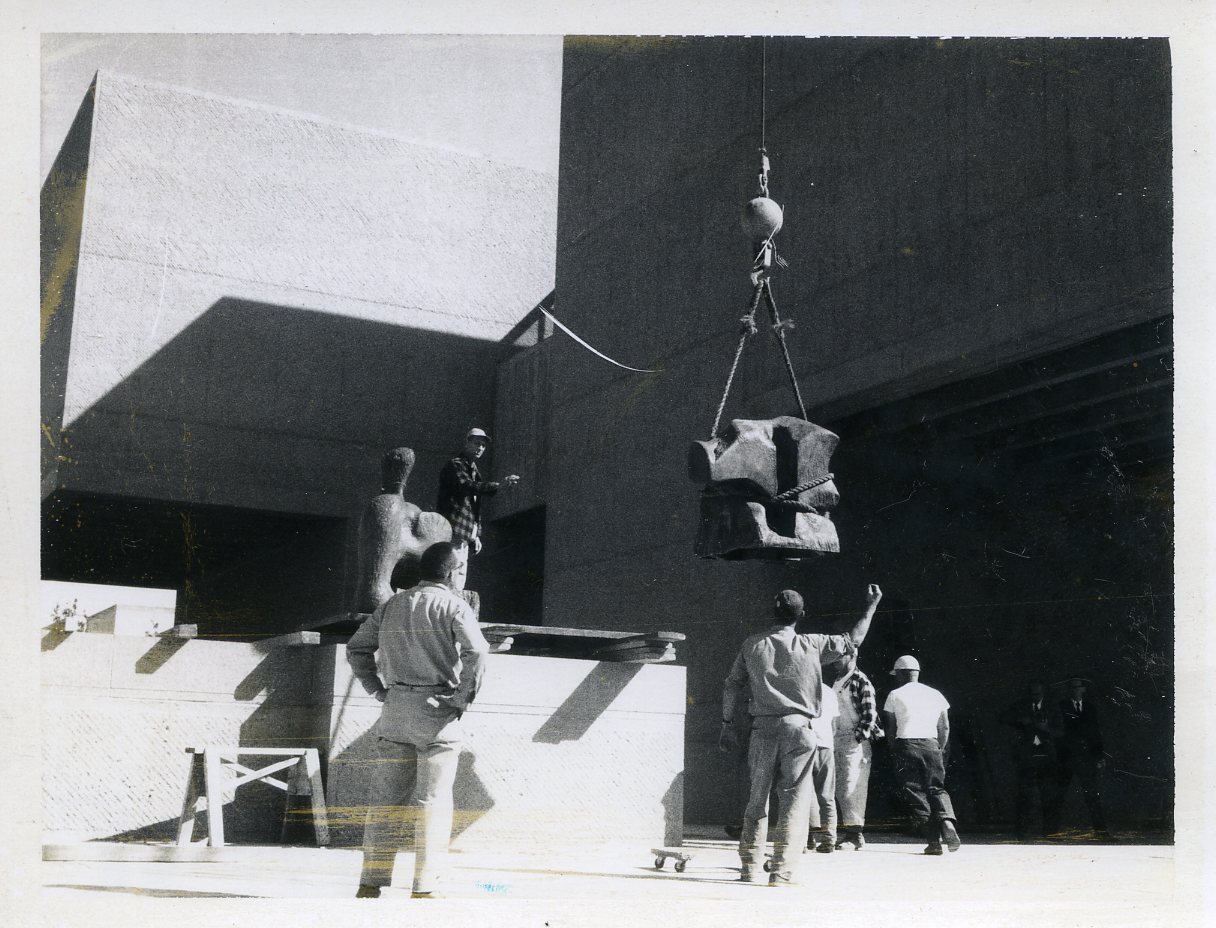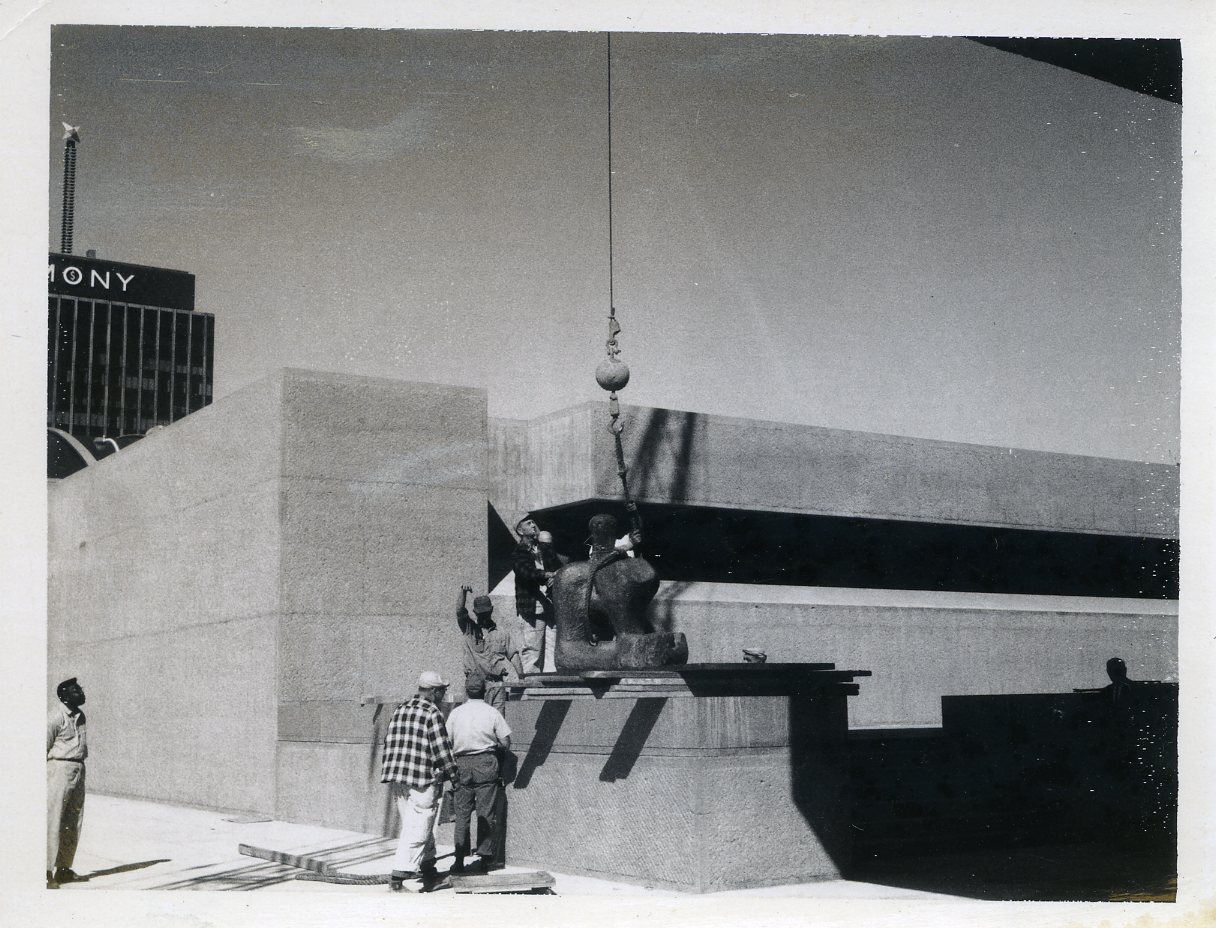Henry Moore (1898- 1986) was an English artist best known for monumental bronze biomorphic sculptures of the human figure. Moore and architect I.M. Pei began their long working relationship when Pei selected Moore’s Two Piece Reclining Figure No. 3 to be placed at the Everson Museum’s main entrance. The sculpture was an important component of the Everson’s design from Pei’s earliest drawings. Pei included Two Piece Reclining Figure No. 3 in his original architectural sketches for the Everson in 1962, and in a telegram to the Everson’s director Max Sullivan dated April 19, 1965, Pei stated, “It is #1 on my recommended list of major acquisitions for Everson.” The Museum officially purchased Two Piece Reclining Figure No. 3 in 1968, the year the building opened.
Moore’s sculpture was an integral element to the Museum’s construction. The organic, curvilinear sculpture emerges like two mountains from the flat planes of the entrance plaza and contrasts with the angular and geometric forms of the building. This contrast prepares visitors to enter the Museum, where they are similarly confronted with the spiral staircase as it emerges from the square sculpture court.
These photographs show the installation of the sculpture on September 13, 1968, about a month before the Everson opened to the public. In the first two photographs, a team of workers using a crane delicately lowers the monumental sculpture onto its pedestal outside the Museum, where it sits today. In the third photograph, Max Sullivan removes a strap used during the installation.
-Maggie Teschler, Curatorial Intern
Image captions:
- Three photographs showing the installation of Henry Moore’s Two Piece Reclining Figure No. 3 outside the Everson Museum of Art, Syracuse, September 13, 1968. Photographer unknown.





